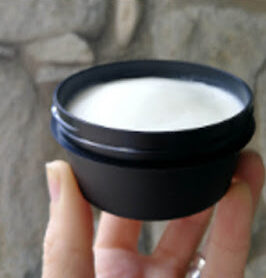Many commercial deodorants contain chemicals and artificial fragrances that can irritate the skin. A natural alternative is not only better for your skin but also just as effective. Here’s a recipe for a DIY natural deodorant that truly works, along with some tips to ensure you get the best results.
Ingredients
- 1/2 cup coconut oil
- 1/4 cup baking soda
- 1/4 cup arrowroot powder or cornstarch
- 10-15 drops of essential oil (e.g., lavender, tea tree, or eucalyptus)
- 2 tablespoons shea butter (optional for extra moisturizing)
Instructions
1. Melt the Coconut Oil and Shea Butter:
- In a double boiler, combine the coconut oil and shea butter (if using).
- Heat gently until melted and well combined.
- Remove from heat.
2. Mix Dry Ingredients:
- In a separate bowl, mix the baking soda and arrowroot powder or cornstarch.
- Ensure there are no lumps for a smooth final product.
3. Combine and Add Essential Oils:
- Slowly add the dry mixture to the melted oils, stirring continuously.
- Add the essential oils and mix thoroughly.
4. Pour and Set:
- Pour the mixture into a clean, empty deodorant container or a small glass jar.
- Let it cool and harden completely before use. You can place it in the refrigerator to speed up the process.
How to Use
- Application: Scoop a small amount of the deodorant with your fingers (if in a jar) or apply directly (if in a stick form). Apply to clean, dry underarms.
- Frequency: Use daily, reapplying as needed, especially after heavy sweating or physical activity.
Benefits of DIY Natural Deodorant
1. Chemical-Free: Free from artificial fragrances, aluminum, and other potentially harmful chemicals.
2. Customizable: Adjust the essential oils to create your preferred scent and add extra ingredients like shea butter for additional benefits.
3. Cost-Effective: Made from affordable, everyday ingredients.
FAQ
Q: Is it normal to experience a detox period when switching to natural deodorant?
- Yes, some people experience a detox period where their body adjusts to the new deodorant. This may include increased sweating or odor initially but usually resolves within a few weeks.
Q: What if I have sensitive skin?
- You can reduce the amount of baking soda or replace it with more arrowroot powder or cornstarch. Adding shea butter or using soothing essential oils like lavender can also help.
Q: How long does the deodorant last?
- Properly stored in a cool, dark place, the deodorant can last up to six months. If it begins to separate or develop an unusual odor, it’s time to make a new batch.
Tips
1. Patch Test: Before using the deodorant extensively, do a patch test to ensure you don’t have any adverse reactions to the ingredients.
2. Storage: Keep the deodorant in a cool place to prevent it from melting, especially in warm climates. You can store it in the refrigerator for a firmer texture.
3. Adjustment: Feel free to adjust the recipe to suit your needs. More coconut oil can make it smoother, while more baking soda can increase its effectiveness.
Conclusion
Making your own natural deodorant is a simple and rewarding process that offers numerous benefits. This DIY recipe provides an effective and safe alternative to commercial deodorants, helping you stay fresh and odor-free naturally. Enjoy the peace of mind that comes with using a product that’s gentle on your skin and the environment.

